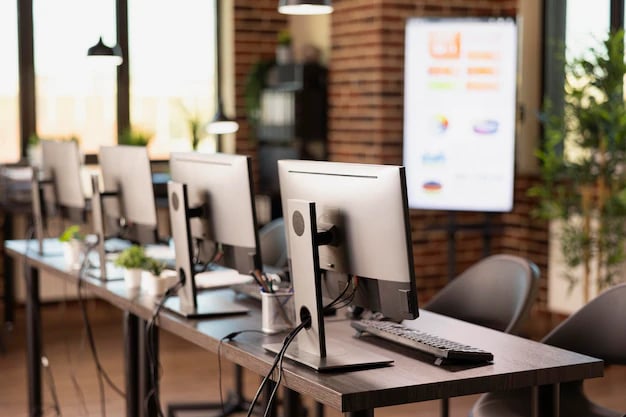
INTERNATIONAL DEVELOPMENT
10 courses | 2 months (estimated).
For Students, Professionals & Entrepreneurs.
STUDY ZONE
Please scroll down to access the Audiobook courses for this Diploma Program. You can listen to them via YouTube.
To obtain our Diploma qualification, your must score at least 50% pass mark in our "Thesis-based" examination. To book your exam slot, please scroll to the bottom of the page. Also, you'd be able to download your FREE eBook copies of all assigned courses after booking for your exam.


ELIGIBILITY & DURATION
This program is 100% online and on-demand.
Anyone, irrespective of their qualifications and educational backgrounds (high school leavers, first degree, postgraduate etc) can apply. We welcome all learners to this vocational diploma program.
It is self-paced. You can start and conclude at anytime. If you however wish to apply for our Diploma certification, you must then book for our examinations.
Our exams are written, thesis-based project assignments. You will be given a real-life case scenario, and then asked to produce a document that proffers a solution to the problem. During the entire duration of your thesis project, you'd be assigned an academic supervisor who will provide guidance and finally grade your project delivery.
We expect that all our students should submit their thesis-based project assignments within 90 days from the date they book their exams.
Just Energy Transition
A Just Energy Transition refers to the shift from fossil fuel-based energy systems to renewable and sustainable energy sources in a manner that is fair, inclusive, and equitable to all stakeholders—especially workers, communities, and vulnerable populations affected by the change. It recognizes that while transitioning to clean energy is necessary to combat climate change, the process must also address the socioeconomic inequalities and environmental injustices historically embedded in our energy systems. Unlike a conventional energy transition, which focuses primarily on the technical and economic aspects of replacing fossil fuels, a just transition places equal emphasis on who is affected, how they are affected, and how they are supported during and after the shift.

Climate Change & Gender Mainstreaming
Gender refers to the socially constructed roles, responsibilities, behaviors, and expectations assigned to individuals based on their sex. These roles differ from one society to another and are influenced by cultural, religious, historical, and economic factors. While "sex" is a biological classification, "gender" is a fluid and evolving social concept. In the context of climate change, gender plays a significant role in shaping people’s experiences, vulnerabilities, and capacities. Women and men often face different risks and opportunities due to their distinct roles in families and communities, access to resources, and participation in decision-making processes.

Circular Economy
The Circular Economy is an economic system that aims to eliminate waste and keep resources in use for as long as possible. It represents a systemic shift away from the traditional linear model of “take, make, dispose,” towards a more regenerative approach in which products, materials, and resources are reused, repaired, refurbished, and recycled. In this model, economic growth is decoupled from resource consumption. Rather than relying on the extraction of finite raw materials, the circular economy seeks to create closed-loop systems where materials flow continuously in a productive cycle. It is both an economic and environmental response to the challenges posed by resource scarcity, climate change, and unsustainable consumption patterns.

Crisis Response & Disaster Risk Reduction
Disasters are not only about the natural forces that cause them—they are about people, places, and the systems we create. Whether it’s a hurricane that batters a coastal town, a pandemic that shuts down cities, or a war that displaces millions, the impact of a crisis is always magnified by our level of preparedness and our ability to respond swiftly and effectively. In recent decades, the frequency and intensity of disasters have increased. Climate change has made weather patterns more erratic, technological dependence has created new vulnerabilities, and global interconnectedness means that crises in one part of the world often ripple far beyond their point of origin. From the 2004 Indian Ocean tsunami to the COVID-19 pandemic, and from the Haiti earthquake to the war in Ukraine, we have been reminded repeatedly that no nation is immune to disaster. Yet, we have also seen inspiring examples of resilience—communities coming together, first responders risking their lives, and governments adapting to challenges with innovative solutions. This course is about understanding both the risks and the responses. It’s about preparing for the worst while building toward a safer future.

Project Management
Project management is the art and science of turning ideas into reality. At its core, it’s about getting things done — efficiently, effectively, and with as few headaches as possible. More formally, project management is the application of knowledge, skills, tools, and techniques to project activities to meet project requirements. This definition comes straight from the Project Management Institute (PMI), but let’s break that down into something more practical. If you’ve ever planned a birthday party, launched a product, built a website, or even organized a vacation, you’ve managed a project — maybe without even realizing it. Every project has a goal, a timeline, a budget (even if it’s just “don’t spend too much”), and usually, a few surprises along the way. Project management helps you navigate all of that.

Climate Change & Water Management
Water is the lifeblood of our planet. It shapes landscapes, supports ecosystems, and sustains human life. Yet, as the 21st century unfolds, the world faces an unprecedented water crisis—one that is being amplified by the accelerating forces of climate change. Across continents, the rhythms of rain, snow, and seasonal flows that have governed life for millennia are becoming less predictable. Glaciers that feed rivers are shrinking. Groundwater tables are falling. Droughts are deepening, and floods are becoming more frequent and more destructive. From megacities to rural farmlands, communities are grappling with water insecurity at a scale and speed never before seen.

Introduction to Renewable Energy Economics
Energy is the engine of modern economies. Every good produced, every service delivered, and every moment of modern life is underpinned by energy use. Understanding how energy markets function is essential for making informed decisions about energy policy, investments, and the shift toward renewables. This chapter introduces the core principles of energy economics, including supply and demand, market structures, price formation, and elasticity—providing the analytical tools needed to assess renewable energy in economic terms.

Impact of Climate Change on Ecosystems & Human Health
The Earth has always changed. Ice ages have come and gone, oceans have risen and receded, and species have evolved and vanished. But the pace of change we are now experiencing is different. It's faster, more widespread, and—most importantly—driven not by natural forces alone, but by human activity. This phenomenon, broadly known as climate change, is one of the defining challenges of the 21st century. From the highest mountain peaks to the deepest ocean trenches, no part of the Earth is untouched by the warming atmosphere and shifting climate. We are entering an era where the very systems that support life—air, water, land, and biological diversity—are being pushed beyond their limits. As climate patterns shift, ecosystems strain under the pressure, and human health faces new and evolving threats. But to understand how we got here and where we are headed, we must first understand what climate change truly is.

The Future of Sustainable Urban Planning
Read along. Get the ebook here - https://flutterwave.com/pay/e0brj0ysania **** The world is in the midst of an unprecedented transformation. For the first time in history, more people live in cities than in rural areas. By 2050, nearly seven out of ten people will call an urban area home. This massive demographic shift places cities at the very center of the global sustainability challenge. They are engines of opportunity and innovation, but also sites of inequality, environmental stress, and climate vulnerability. As the climate crisis accelerates, the stakes of urban planning have never been higher. The choices made in city design, infrastructure, housing, and governance will determine not only the quality of urban life but the health of the planet itself. Will future cities deepen existing problems of sprawl, congestion, and carbon dependency, or will they emerge as models of resilience, equity, and regeneration? This course, The Future of Sustainable Urban Planning, explores this critical question. It examines the principles, practices, and possibilities shaping the next generation of cities. Moving from historical context to contemporary challenges, from cutting-edge innovations to speculative futures, it offers a comprehensive guide to understanding how urban environments can transition toward sustainability.

Sustainable Farming
Farming is one of humanity’s oldest stories — and one of its most powerful. From the first seeds sown in fertile river valleys thousands of years ago, agriculture has been the foundation of civilization. It has fed empires, fueled innovation, and shaped the very landscapes we inhabit. But in the last century, our relationship with farming has changed dramatically. Industrial agriculture — with its vast monocultures, heavy machinery, and reliance on synthetic inputs — has delivered remarkable gains in yield. It has fed billions, built global supply chains, and made food cheaper than ever before. But it has also left a heavy footprint: depleted soils, polluted waters, collapsing pollinator populations, rising greenhouse gases, and rural communities in crisis. The very system designed to nourish us is now one of the largest contributors to climate change and biodiversity loss. At the same time, farmers face increasing pressure. Climate shocks threaten harvests. Input costs rise even as farmgate prices stagnate. Many small farmers are caught in cycles of debt, while young people struggle to access land and training. And around the world, one in ten people still go hungry. The paradox is stark: we produce enough to feed everyone, but we are undermining the very ecosystems that make production possible. This book is about breaking that cycle — about reimagining farming as a force for regeneration rather than depletion. It is about sustainable farming: a way of working with nature, not against it; a way of growing food that restores soil health, protects water, strengthens rural economies, and nourishes communities.



